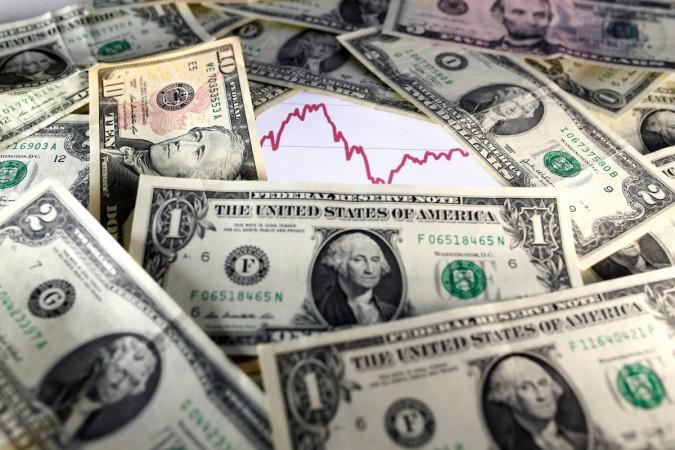
The US dollar's march higher against major currencies will run out of road within the next six months, according to a Reuters poll of foreign exchange strategists, who have held on to that view since May.
While the greenback fell about 3 percent in the first few months of the year since mid-April the dollar index .DXY has risen more than 6 percent, supported by investors seeking safety in US assets on concerns over the impact of trade tariffs.
Those concerns are well-founded; the US trade representative's office said on Tuesday it would begin collecting 25 percent tariffs on another $16 billion of goods imported from China later this month, and China has vowed to retaliate to an equal degree.
The dollar fell a quarter of a percent against a basket of currencies on Tuesday, its biggest drop in a week, suggesting its fear-driven rally is showing signs of fading despite escalating trade disputes.
The latest Reuters poll of more than 60 currency analysts, taken from August 3 to 8, suggested all major currencies will be higher than they are now against the dollar in six months and in a year.
A slight majority - 29 of 52 analysts - who answered an additional question said they were not confident the dollar would be able to maintain its strength over the next six months. The remaining 23 said they were either confident or very confident.
The dollar may struggle to move much higher, given that currency positioning by speculators is close to the most bullish on the dollar since January 2017, according to Commodity Futures Trading Commission data.
There was even more clarity when asked if the dollar rally could last a year, with 37 of 52 analysts saying they were not confident, including 13 who said they were not confident at all.
"It has had a 6 or 7 percent rise in the last three months - but it is flattening out...and is showing already that there is a resistance among investors to take the dollar further up," said Gavin Friend, senior market strategist at NAB.
"We are not saying the dollar has peaked here. It might have a little bit of further strength to go, but by the time we get into the back-end of this year, the dollar will start to ease off again."
China's yuan, actively managed by the Chinese authorities but which has taken the biggest hit from the ongoing trade wrangling, is now expected to cut some of its losses against the dollar and appreciate over the coming year.
The yuan held firm near a one-week high versus the dollar on Wednesday, extending its rise after the central bank took some steps to curb the currency's decline.
The market has already fully priced in most of the factors which have aided the dollar rally, including the threat of a full-blown trade war, robust economic performance and interest rate differentials. So any further gains in the currency will be limited.
While better-than-expected economic performance in the United States and higher interest rates there than elsewhere could still benefit the dollar, a separate Reuters poll showed U.S. economic growth likely peaked in the second quarter.
"The dollar has been winning so far because of two things - one is this trade war...and the other is that the Federal Reserve is the only central bank out there which is tightening in a sustained way," said Viraj Patel, foreign exchange strategist at ING Bank.
"Unless we get even stronger growth in the third quarter, which the data so far hasn't suggested - and if that is the case then it is hard to price-in another level of dollar strength."
Interest rate differentials may also stop widening soon as the Fed is largely expected to stay on its current path and the European Central Bank has said it will wind down its massive stimulus program by end-2018. It is then predicted to raise rates around this time next year.
The euro EUR=, which is down over 3 percent this year so far, is forecast to regain most of those losses to $1.19 in six months from around $1.16, where it was trading on Wednesday. It is then forecast to rise to $1.23 in a year, unchanged from July's poll.
Median expectations for the single currency had fallen from the prior poll for three straight months until this survey.

















